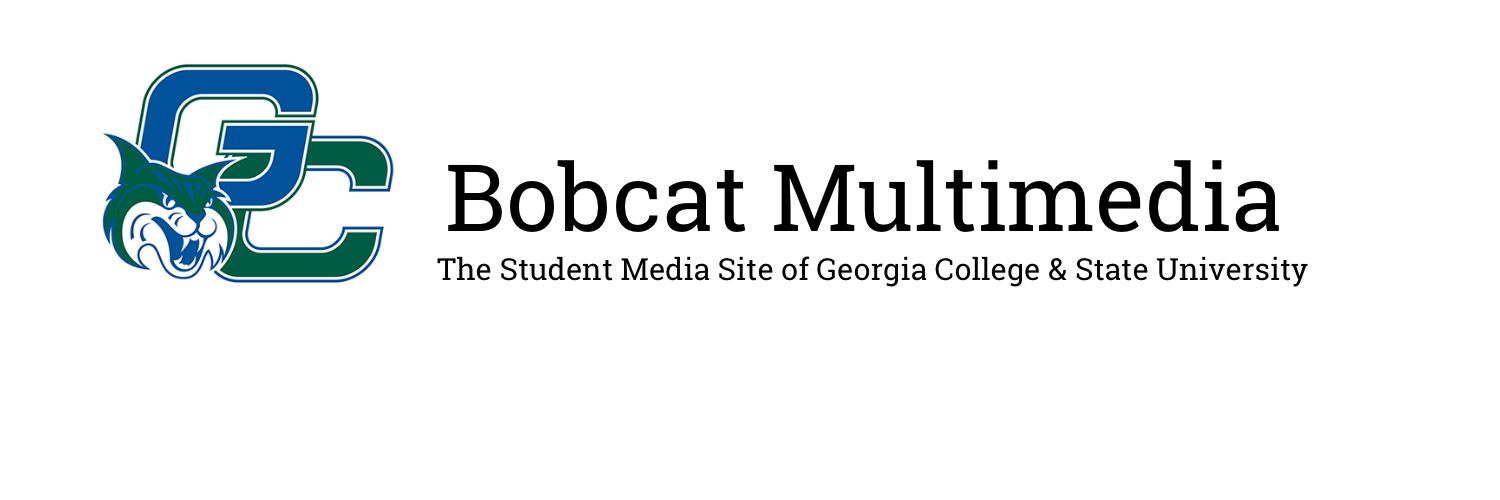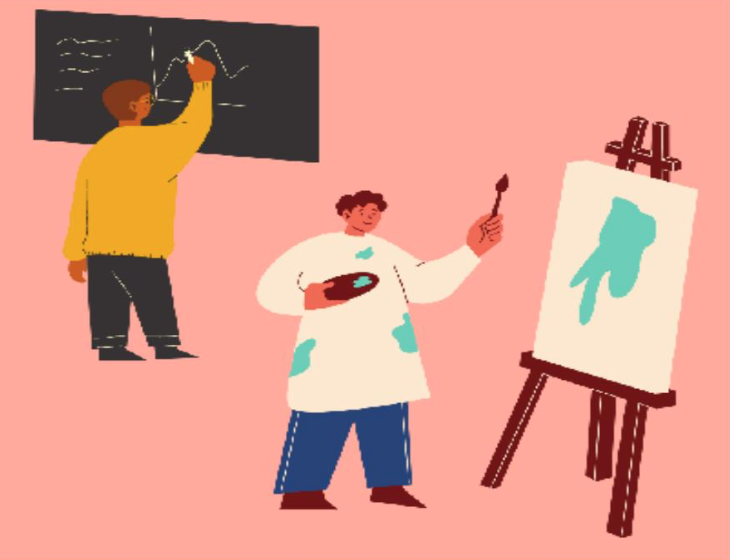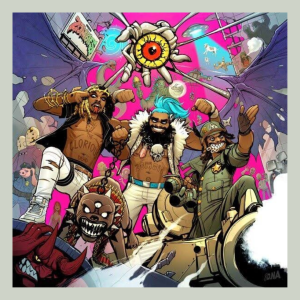Art is not only for the left-brained
it is a universal method of communication
March 9, 2023
For centuries, art has been a method of intuitive communication that sparks a certain type of feeling in its beholder. Each person perceives art differently. Some people have a stronger connection to it than others. There are those who seek out art and desire for it to be a large portion of their life, and there are those who keep art at a distance. It can be fascinating and informative to obtain an understanding of the complex ways in which individuals view artistic creation.
For those that think more with the right side of the brain, art typically has a huge impact in their life. It is a source of grounding and connection, as well as an escape from the stresses of day-to-day life. For those that perceive art in this manner, pastimes such as photography, painting, sculpting or other mediums are a practice they hold dear to their heart and have a strong understanding of. This can also be the case for those who practice other art forms such as music.
In The Healing Power of Art & Artists article “Art Enhances Brain Function and Well-Being,” by Renee Phillips, the impact art has on overall thinking and mentality is further explored.
“The Research Center for Arts and Culture (RCAC) at the National Center for Creative Aging (NCCA) established that artists suffer less loneliness and depression than the general population,” Phillips said. “According to the study, mature artists are highly functioning members of society and are twice likely to do volunteer work than others. The study proved the benefits of the ART CART, a program that serves mature artists. The research also proved general benefits of art-making and creative collaboration for the aging population.”
For many right-brained people, artistic values intrinsically become part of their personalities. It is not something they can control or even consciously think of. It is a crucial aspect of them as a person. For many right-minded individuals, art is a lifestyle rather than a hobby.
For those who are known to think more analytically, it can be a challenge to understand the meaning behind art. It can also be difficult for those who are left-brained to understand the connection that right-brained people feel to art. Despite these barriers, there are methods of art that can be suitable and appealing for all. It is not limited to the general mediums that come to mind when thinking of artistic practices, such as drawing and painting. Art can also be found in practices like fashion, interior design, photography, cooking and music. There truly is no limitation to where art can be found.
Art is often used as a powerful healing tool for mental health and those who are in a stage of recovery. Those being coached through the healing process tend to be exposed to creating their own art as well as visualizing the art of others. In elderly homes for those that struggle with dementia or memory loss, art is used as a crucial tool to maintain brain activity and increase the happiness of patients.
In Philips’ article “Art Enhances Brain Function and Well-Being,” the author elaborates on their personal experiences with artistic healing.
“As I reflect back on that time of my life as a volunteer in the mental hospital, I realize how fortunate I was that the patients gave me permission to enter the private corridors of their mental state — demons and all, “Phillips said. “They provided an enormous amount of valuable education that no academic course could ever offer to me. I also learned firsthand how creative self-expression has the potential to help those inflicted with mental illness. There are ways to communicate through art that transcend barriers and limitations and go straight to the heart of the matter.”
Art allows for a certain type of subjectivity that is not given the same capacity in other areas of life. It encourages the artist to create what is speaking to them, without limitation or hesitation. These are benefits that can be healing to anyone, no matter their stage of life or way of thinking.
Regardless of the unique impact art has on every individual, it is a crucial piece of life and society as we know it. There is artistic vision all around us, even in the foundations of how we dress, where we live and the type of music we listen to. Each person is connected to art in a way that is personal and grounding to who they are.




